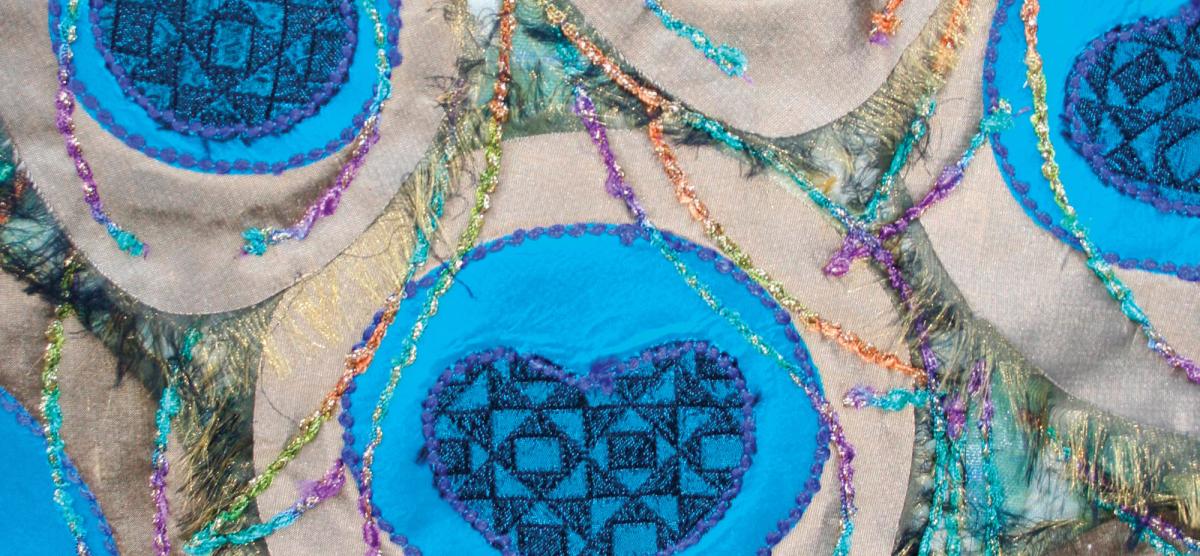
Art and Reinvention
Creative enterprises mean remaining open to invention, these two alumnae have found.
As a writer, I don’t fear the empty screen. I’ve come a long way since freshman year in Brecon Hall, hunched over my two-tone blue electric Smith-Corona as the sun rose on the blank first page of my English paper. Back then, I looked into the void and panicked; now, long practice makes me trust that, eventually, I will bring order to chaos, find meaning in events, make the inconceivable possible by putting thoughts into words.
I’m not alone. At midlife, we Mawrters have more faith in our abilities and rely less on the market-driven world’s narrow standard, fame and fortune, to mark our successes. Alumnae artists over 50 confide to me that although they’re doing their best work today, this urgent, largely interior labor is more often treated as donation than commodity. How do we go on making art and meaning? Here, inspiration from the Bryn Mawr diaspora: my colleagues from the Religion, Spirituality, and the Arts (RSA) seminar in Indianapolis, who continually renew their talents to create and curate for the long haul.
“The better you understand your materials, the better your work will be,” says Brigid Manning-Hamilton ’78, fellow participant in the Butler University/Christian Theological Seminary program, which convenes 15 artists from different disciplines and faith practices to discuss Genesis 1-2:2 and generate music, poetry, prose, and visual art for a public exhibition. “Analysis can help you to be a better maker—to step back and ask, what am I missing? But that’s not where I start. As I’m working, my materials change my ideas and push my art in a direction I hadn’t anticipated.”
Her textile and mixed-media work includes commissioned liturgical pieces for all faith traditions, from exquisite Episcopalian baptismal vestments honoring a church’s first female priest to a SpiritWear series based on Ghost Dance shirts, shaman’s coats, and the kimono shape.
“At this age, you have better perspective on all the ‘yous’ you’ve been—so you can begin to let some things go.”
An “inveterate scavenger,” Manning-Hamilton makes one-of-a-kind jewelry and found-object art for BriggidlyPunkDesigns. “My materials are the genesis,” she says, whether she’s working with fabric, shells, and bones, or Silicon Age electronic artifacts. Though her background in history informs her liturgical pieces, art is storytelling, she says. “Making found art, especially, I look at what these objects were and then imagine a new story for them.”
Perhaps particularly for women, such openness to reinvention raises satisfaction in the last third of life. If experience is “material,” then self-knowledge guides what we pack (or purge) for the chapter ahead. As RSA faculty member Julia Muney Moore ’83 puts it, “At this age, you have better perspective on all the ‘yous’ you’ve been—so you can begin to let some things go.”
Moore, an arts administrator, made a mid-career move to specialize in public art. “It’s really easy to get trapped in a bubble, to curate your world so you only see things you like or people who think like you,” she says. With funding from the Arts Council of Indianapolis, she traveled and toured site-specific civic projects, retraining her skilled curator’s eye before landing a job as the council’s director of public art.
Middle-aged but relatively new to the field, Moore says her younger colleagues sometimes assume she’s not interested in new art theories and techniques. But “I was here when the new way of thinking was the old way of thinking,” she says. “Things go in cycles; the past moves in chunks. It’s really cool to see how art from the 1970s and 1980s, when I was in high school and college and graduate school, is now the subject of retrospectives.”
Moore’s long view—and her background in classics and art history—lets her see where artists’ ideas fit into a larger scheme and evaluate their work in terms of craftsmanship and depth of concept. “Some of the artists I work with think that ‘temporary’ means ‘quick’ or a short turnaround,” she says. “I encourage them to think of their art as both temporary and well-thought-out and crafted.” In championing women artists, she remedies an art historical canon that too often viewed women’s contributions “not as new and interesting but new and wrong.”
Historically, women artists have always thrived while working in novel forms open to invention. In other words, original work doesn’t come from nothing or nowhere, but from the as-yet-unknown, conjured when we name experience, ask a question, and connect seemingly disparate things. Making, unmaking, remaking: for Mawrters at midlife, process is progress, pointing to new directions and the promise of creative renewal.
Published on: 03/17/2017
